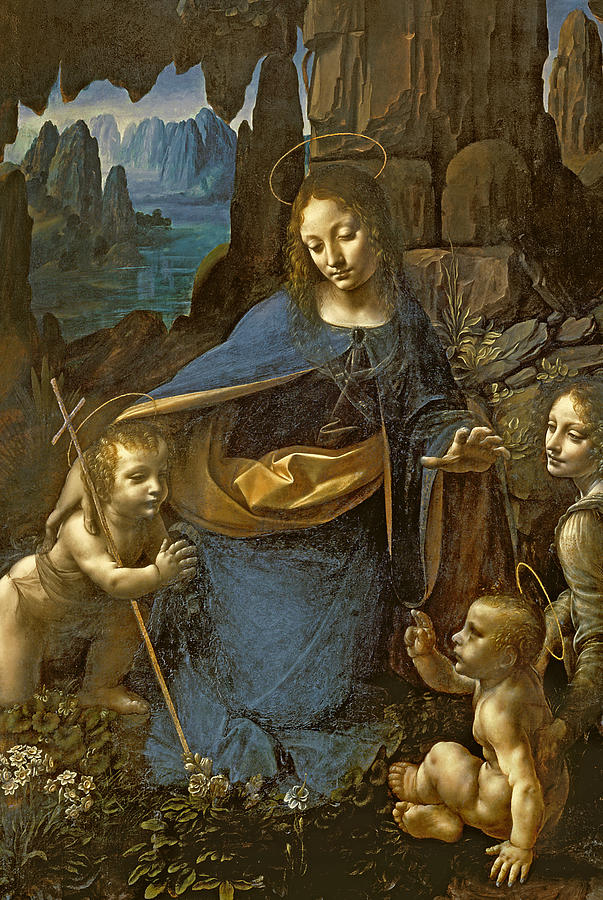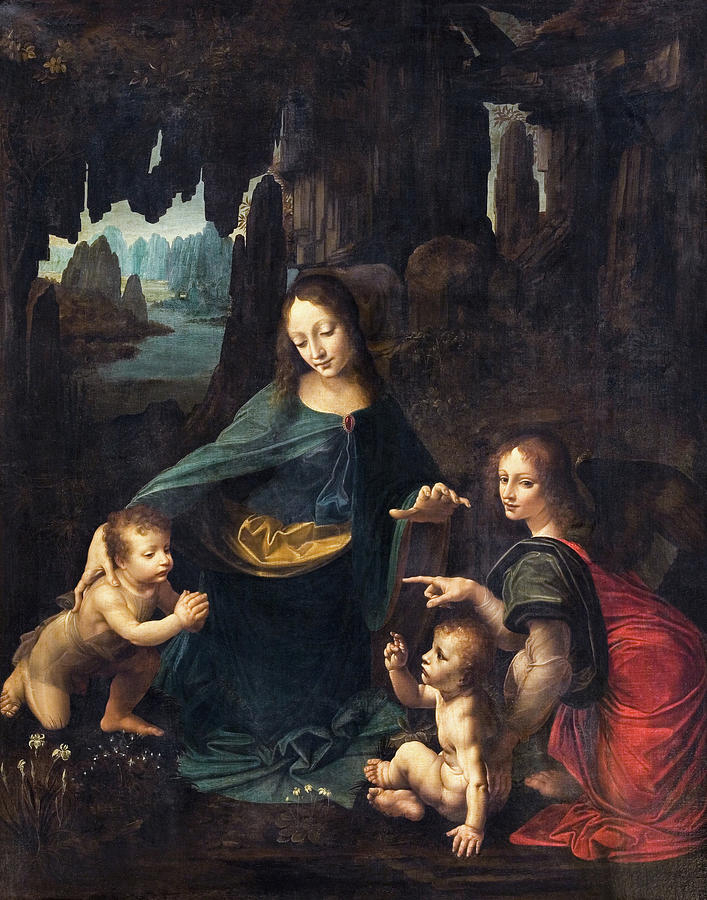Virgin of the Rocks
Many academics believe that Leonardo's painting The Virgin of the Rocks in the Louvre, which is based on stylistic evidence, is the first of two depictions of an apocryphal legend in which the Holy Family encounters Saint John the Baptist as they flee to Egypt following Herod's Massacre of the Innocents. The Confraternity of the Immaculate Conception, which had commissioned the piece, and Leonardo engaged in years of legal disputes, which finally prompted Leonardo to paint a different depiction of the topic in approximately 1508, which is currently held in the National Gallery of London.
The High Renaissance may be seen in the first artwork, which was created by Leonardo. Early works from this era frequently showed rigid, linearly arranged figures that were separated from one another. However, in The Virgin of the Rocks, the representations of the Virgin Mary, the Christ Child, the baby John, and an archangel are placed in a pyramidal composition and credibly occupy a space as well as engage in gestures and looks with one another. Instead of sitting on a throne, as she was in so many early Renaissance paintings, a young Mary is shown sitting on the ground amid a cryptic rocky terrain.
She tilts her head protectively toward the baby John, who is bowed down in prayer to the left, and it appears as though she nudges him toward the Christ Child to the right. Her body is in motion; it appears to swing. As an archangel, depicted from behind in a complicated position, gestures toward John and casts an enigmatically outward gaze at the audience, Jesus, in turn, blesses John. The Holy Family seems less heavenly and more human because to Leonardo's notable omission of the typical holy symbols—halos for Mary, Christ, and a staff for John.









